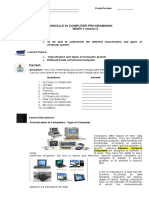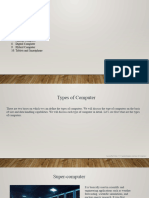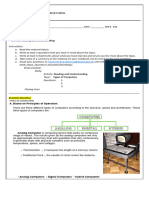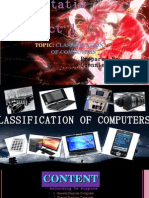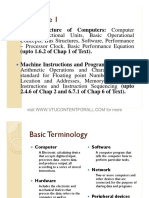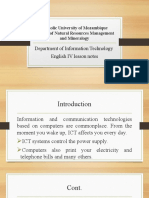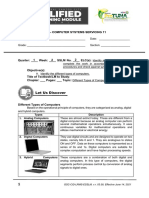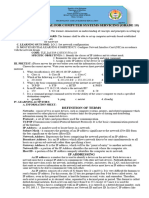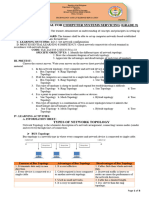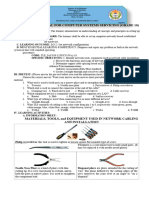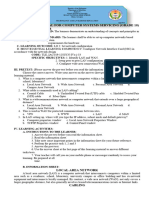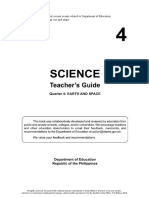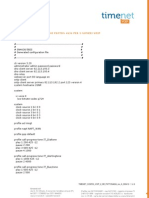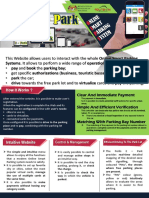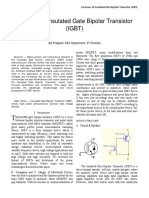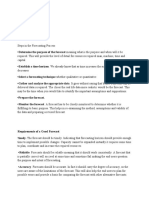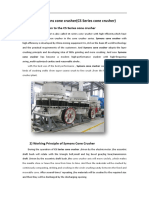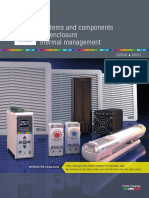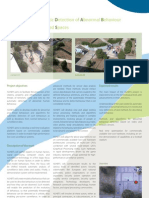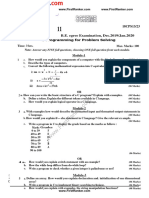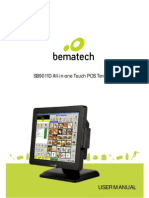Republic of the Philippines
Department of Education
Region V
SCHOOLS DIVISION OF SORSOGON
LEARNING ACTIVITY SHEET
Quarter - 1
TECHNOLOGY AND LIVELIHOOD EDUCATION – Grade 9
Computer Systems Servicing
Student Name: ______________________ Grade & Section: _________________
Teacher: ___________________________ Date Submitted: _________________
I. INTRODUCTORY CONCEPT
This module deals with the type of computers. All the computers that are developed are
not alike rather they have different designs and features. Some computers have very high capacity
as well as working speed; however, some are slow. Depending upon the requirements, computers
are being developed.
II. LEARNING COMPETENCIES
LO.1 Assemble computer hardware (TLE_IACSS9-12ICCS-Ia-e-28)
1.2 Prepare unit assembly to ensure OHS policies and procedures are followed in accordance
with systems requirements
1.3 Identify materials necessary to complete the work in accordance with established
procedures and check against system requirements
Objectives:
1. Identify the types of Computer.
2. Classify the different types of Computer.
3. Recognize the importance of knowing the different types of Computer.
III. ACTIVITIES
A. LESSON INFORMATION
Types of Computer
A. According to Technology
1. Analog Computer – This computer recognize data as a continuous measurement of a
physical property (voltage, speed and temperature) Example: Automobile speedometer.
2. Digital Computers - These are high speed programmable electronic devices that
perform mathematical Calculations, compare values and store result. They recognize data
by counting discrete signal representing either a high and low voltage state electricity.
3. Hybrid Computers – computer that processes both analog and digital data.
B. According to Purpose
1. General Purpose Computer- General Purpose Computer is a machine that is capable
of carrying out some single data processing under program control. Refers to computers
that follow instruction thus virtually all computers from micro to mainframe are general
purpose.
TLE-CSS_Grade9_Q1_LAS2
� 2. Special Purpose Computer - A computer that is designed to operate on a restricted
class of problems. Use special purpose computer equipment to obtain patient diagnostic
information.
C. According to Size
1. PC (Personal Computer) - A PC can be defined as a small, relatively inexpensive
computer designed for an individual user. PCs are based on the microprocessor
technology that enables manufacturers to put an entire CPU on one chip. Businesses use
personal computers for word processing, accounting, desktop publishing, and for running
spreadsheet and database management applications. At home, the most popular use for
personal computers is playing games and surfing Internet.
2. Workstations - generally come with a large, high-resolution graphics screen, large
amount of RAM, inbuilt network support, and a graphical user interface. Most workstations
also have a mass storage device such as a disk drive, but a special type of workstation,
called a diskless workstation, comes without a disk drive.
3. Minicomputer It is a midsize multi-processing system capable of supporting up to 250
users simultaneously
4. Mainframe - Mainframe is very large in size and is an expensive computer capable of
supporting hundreds or even thousands of users simultaneously. Mainframe executes
many programs concurrently and supports many simultaneous execution of programs.
5. Supercomputer - Supercomputers are one of the fastest computers currently available.
Supercomputers are very expensive and are employed for specialized applications that
require immense amount of mathematical calculations (number crunching). For example,
weather forecasting, scientific simulations, (animated) graphics, fluid dynamic
calculations, nuclear energy research, electronic design, and analysis of geological data
(e.g. in petrochemical prospecting
INSTRUCTIONS TO THE LEARNER: watch the video clip about the different types of computer
https://www.youtube.com/watch?v=uD0acIhi8xE
A. TASK 1: MULTIPLE CHOICE. Select the letter of the correct answer. Write your answers
on a separate sheet of paper.
1. This computer recognize data as a continuous measurement of a physical property (voltage,
speed and temperature).
a. Analog Computer b. Digital Computers c. Hybrid Computers
2. Refers to a computer that follow instruction thus virtually all computers from micro to
mainframe are general purpose.
a. Hybrid Computer b. General Purpose Computer c. Special Purpose Computer
3. Computer that processes both analog and digital data.
a. Analog Computer b. Digital Computers c. Hybrid Computers
4. These is a type of computer that recognize data by counting discrete signal representing
either a high and low voltage state electricity. OMPUTER SYSTEMS SERVICING
a. Analog Computer b. Digital Computers c. Hybrid Computers
5. It is a midsize multi-processing system capable of supporting up to 250 users simultaneously.
a. Microcomputer b. Minicomputer c. Supercomputer
TLE-CSS_Grade9_Q1_LAS2
�C. TASK 2: CLASSIFICATION OF COMPUTER
Direction: Fill in the table below by classifying type of computer.
Write AS - According to Size AP - According to Purpose AT - According to Technology
Write your answers on your answer sheet following the table format below.
CLASSIFICATION CLASSIFICATION
COMPUTER (According to Size COMPUTER (According to Size
According to Purpose According to Purpose
According to Technology) According to Technology)
1. Analog Computer 6. Minicomputer
2. General Purpose
7. Workstations
Computer
3. PC (Personal
8. Mainframe
Computer)
4. Supercomputer 9. Hybrid Computers
10. Special Purpose
5. Digital Computers
Computer
TASK 3. PERFORMANCE TASK
I’M READY FOR COLLAGE
Direction: Gather or cut out some pictures from old books or magazines that shows the different
types of computer. Label the collage according to their classification. Paste the pictures in a short
bond paper and submit your work upon the retrieval/ distribution of the LAS.
(Should you fail to gather pictures from old books/ magazines, you can search on the internet and
have it printed.)
Your work will be graded based on the rubric below.
IV. RUBRICS
SCORE DESCRIPTION
20 Submitted at least two pictures for each type of computer in the collage and
correctly labelled or identified. The task is submitted on time.
10 Submitted a picture for each type of computer with correct label and the task is
submitted on time.
5 Only one, out of the three types of computer is in the collage and correctly
labelled or identified. The task is submitted on time.
1 Did not perform the given task.
V. EVALUATION
Direction : A. Tell whether the given statement about types of computer is TRUE or FALSE.
Write (T) if the statement is true and (F) if the statement is False. Write your answer on your
answer sheet.
1. Supercomputer is very large in size and is an expensive computer capable of supporting
hundreds or even thousands of users simultaneously.
2. Minicomputer is a midsize multi-processing system capable of supporting up to 250 users
simultaneously.
3. Personal Computer is a single user computer system having moderately powerful
microprocessor.
TLE-CSS_Grade9_Q1_LAS2
�4. Workstation is a single user computer system which is similar to personal computer but have
more powerful microprocessor.
5. Supercomputer is an extremely fast computer which can execute hundreds of millions of
instructions per second
VI. ANSWER KEY
Task 1: Task 2: Evaluation
1. A 1. AT 1. T
2. B 2. AP 2. T
3. C 3. T
3. AS
4. C 4. F
4. AS 5. T
5. B
5. AT
6. AS
7. AS
8. AS
9. AT
10. AP
VII. REFLECTION
Direction: Reflect on the following questions below, then write your responses on your
answer sheet.
3 Things that you’ve learned from this lesson
__________________________________________________________
________________________________________________________________
________________________________________________________________
2 pointers from this lesson that you can apply in your daily life
__________________________________________________________
________________________________________________________________
1 thing that you want to know/explore more
__________________________________________________________
VIII. REFERENCES
CSS CBLM page 9
https://www.tutorialspoint.com/computer_fundamentals/computer_types.htm
https://www.tutorialspoint.com/basics_of_computer_science/basics_of_computer_science_t
ypes.htm
Department of Education – Division of Pasig City Writer: Aiza T. Tuplano
https://www.youtube.com/watch?v=uD0acIhi8xE
LAS DEVELOPMENT TEAM:
Writer:
Ervin G. Balaston
Teacher II
Bulan NHS
Reviewers:
Harlet G. Vargas
Ma. Jinkee G. Sierra
Bulan NHS
TLE-CSS_Grade9_Q1_LAS2

